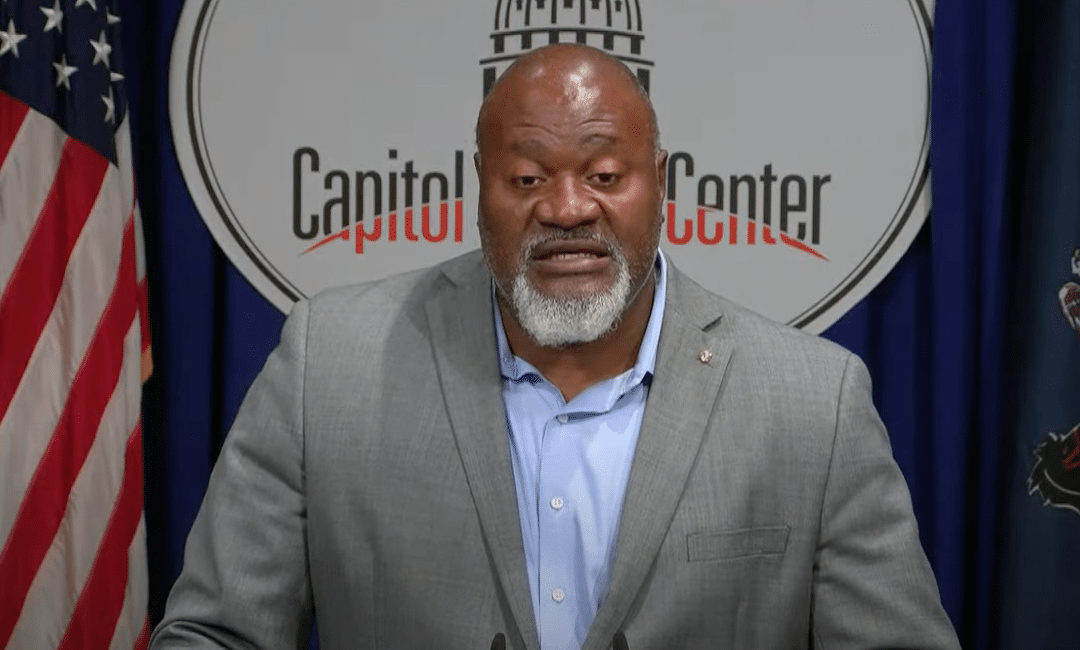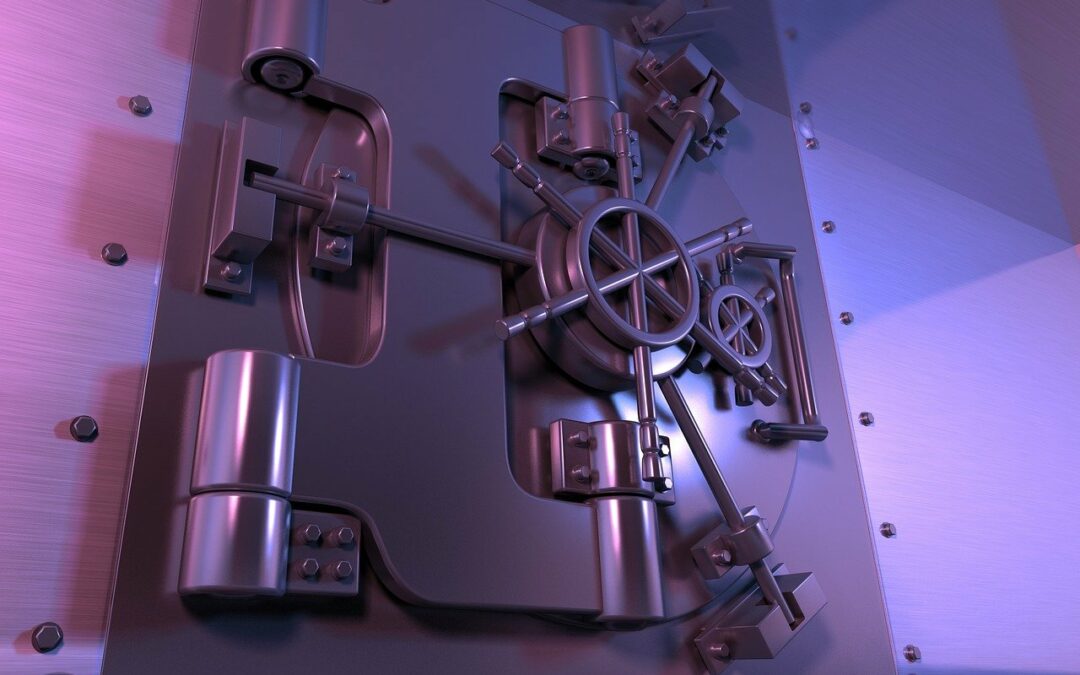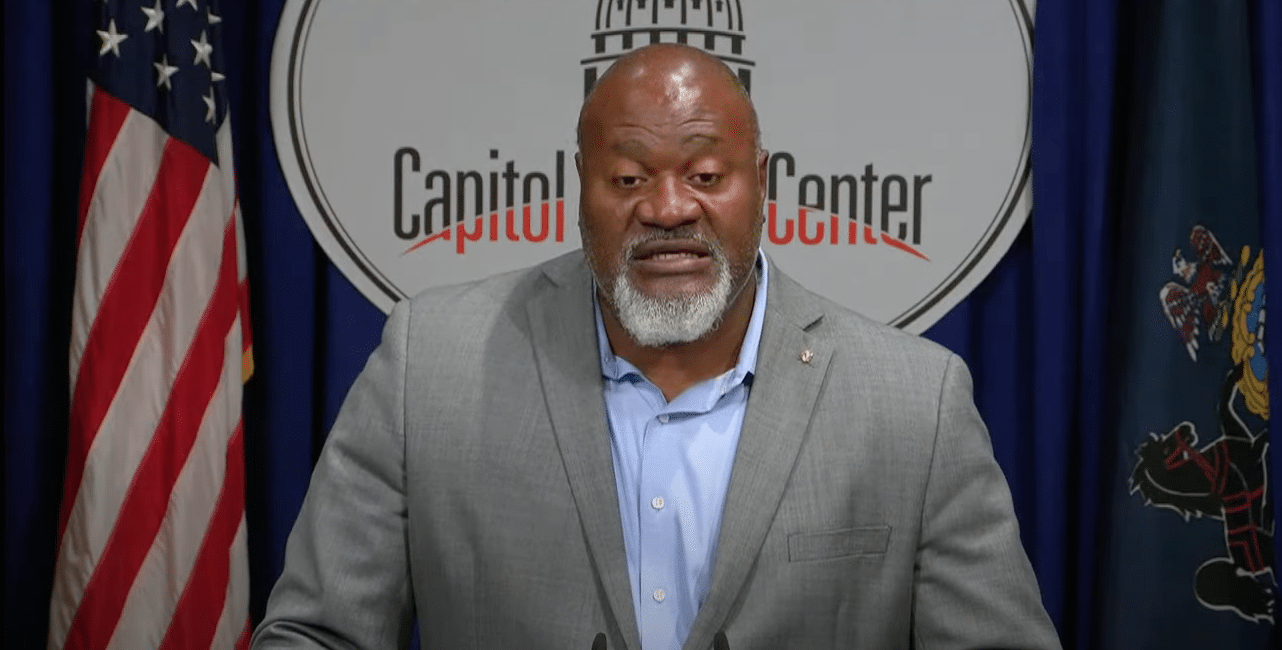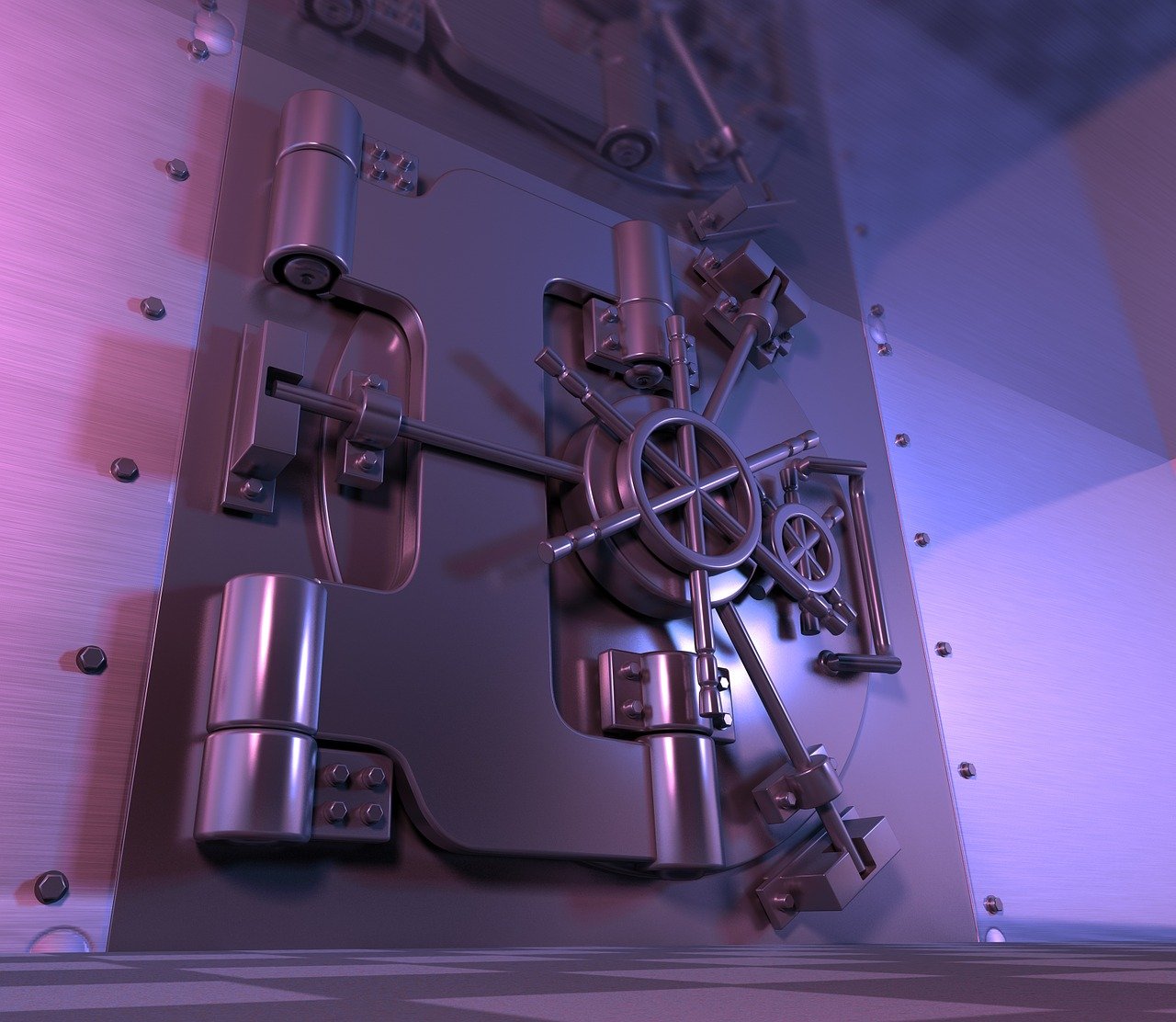
by The Real Dirt | Sep 30, 2021 | Blog, Cannabis Business, Cannabis Law, Cannabis Law and Compliance, Industry News, Legalization, Politics
The news this week that a small Massachusetts town is charging more than $1.3 million in “impact fees” to the three cannabis companies operating within its city limits has reopened the debate over the true impact of cannabis businesses on local communities.
In a recently filed
lawsuit, the cannabis retailer
Stem revealed that the city of Haverhill, Massachusetts, is charging its three cannabis businesses a total of $1.3 million in annual impact fees—and $866,930 of that total is earmarked for the town’s police department.
Those impact fees are being charged despite the fact that myths about cannabis businesses boosting crime have been debunked time and time again. In fact, there’s evidence that cannabis legalization can actually improve local crime clearance rates.
Even as they operate as positive law-abiding forces in their communities, cannabis companies still have to combat the negative stereotypes perpetuated by America’s War on Drugs.
Without any evidence of negative community impact, we’re left to wonder why some towns and cities are allowed to charge cannabis businesses for additional policing.
Cannabiz impact in Massachusetts
Massachusetts’ legalization law allows local communities to charge impact fees that are “reasonably related to the costs imposed upon the municipality by the operation of the marijuana establishment.”
Unlike most other legal states, Massachusetts law forces cannabis companies to sign Host Community Agreements (HCAs) with the town in which they operate. This gives local communities enormous leverage over cannabis companies—which encourages them to tax the daylights out of the local weed stores.
Many Bay State towns use HCAs to create their own mitigation fees based on how they imagine cannabis businesses will impact their townships.
The law was put in place in 2018, when there was little data about the impact of cannabis companies on rates of local substance abuse, intoxicated driving, and crime.

by Travis C | Sep 29, 2021 | 420 News, Blog, Cannabis Business, Cannabis Law, Cannabis Law and Compliance, Legalization, Politics
Rep. Jake Wheatley (D) has introduced a new bill that would legalize Pennsylvania cannabis for adult use. Previous bills have been shot down by the state legislature, but HB 2050 has some revisions that Wheatley is hopeful will help it get through to the Governor’s desk.
Governor Tom Wolf has expressed numerous times his support for broader Pennsylvania cannabis legalization, however the Republican led state legislature has rejected every attempt so far.
Pennsylvania House Bill 2050
House Bill 2050 creates a dynamic permitting structure for growers, processors and dispensaries, allowing any size company to enter the legal cannabis market. This includes lowering initial application and permit fees to alleviate financial barriers. Renewal fees will be based on gross revenue; the higher a company’s gross revenue the higher their renewal fee, which is the fairest way to do it.
Among other things, my bill provides for the Commonwealth Reinvestment Fund (CRF). Specifically, the CRF will fund the following initiatives;
- Minority and Women Grant Program to help disadvantaged populations benefit from this new industry,
- Student Loan Reimbursement Program,
- Mixed Income Housing Program,
- After-School Programs,
- And a public information campaign to educate the public on adult-use cannabis
Under this legislation, a wholesale tax of 10% will be levied on business to business transactions. Growers and processors who partner with an existing Pennsylvania Farm will not be required to pay the wholesale tax. Consumers will see an excise tax (in addition to sales tax) that will start at 6% for the first two years, 12% for years three and four, and then 19% for each year after.
Wheatley’s reasoning for pushing HB 2050 is similar to that of legislators in other states that have moved forward with cannabis legalization. The war on drugs has negatively impacted minority communities that most, and Pennsylvania cannabis legalization would give priority to those most disproportionally affected.
The bill also includes a “clean slate” provision that would help those charged with crimes under the Controlled Substances Act related to cannabis lessen or even wipe prior convictions. In a press conference Tuesday, legislators also used the example of 2019’s vape epidemic — a controversy that impacted over 2,000 consumers — as a reason for legalizing, stating that keeping cannabis illegal only helps the illicit market thrive.
The Pennsylvania state legislature has yet to hold a vote on HB 2050. If passed, Pennsylvania would join 16 other states that have legalized adult-use recreational cannabis.

by Travis C | Sep 28, 2021 | Blog, Business, Cannabis Business, Cannabis Law, Cannabis Law and Compliance, Cannabis News, Industry News, Legalization, Politics

Nearly a year after passing a constitutional amendment to legalize cannabis, New Jersey has yet to open a single retail cannabis store. While the industry has yet to take off, that isn’t stopping regulators from preemptively banning one of the most popular cannabis products.
When it comes to the cannabis products that consumers want, flower remains king. Vaporizer pens and concentrates for dabbing have been slowly catching up with flower as consumers seek a quicker way to get the desired effects of cannabis without burning the plant itself.
However, cannabis edibles have also been gaining popularity. Avoiding the need for any sort of inhalation at all, edibles are great for consumers who don’t want to vape or smoke, but still want the effects of cannabis.
Cannabis beverages have seen the greatest growth since the beginning of 2020, when cannabis sales skyrocketed across the country due to the COVID-19 pandemic. Cannabis capsule products have also grown noticeably in popularity, showing that consumers are seeking a way to consume cannabis without, well, consuming traditional cannabis.
With such growth in the edible cannabis market, it would seem obvious to any potential industry that is about to open that edibles will be a high-demand product. Higher demand means higher profits, which is what any state is seeking when legalizing cannabis.
Unless you’re New Jersey.
Ban on almost all cannabis edibles
Despite having no functional legal cannabis industry to base their decision, regulators in charge of New Jersey’s recreational cannabis have decided to ban all forms of edible cannabis products except for lozenges. This means traditional products consumers would likely be familiar with — cookies, brownies, gummies, beverages — are all prohibited.
The reasoning behind the ban is the same used by many states when they first legalize; the children. Concern over edible products that might appeal to children is a consistent issue in the legal cannabis industry.
While other states passed new regulations requiring child-proof packaging and prohibiting edibles from being designed in a manner that would be appealing to kids (i.e. gummy bears, star-shaped cookies, etc.), New Jersey has decided to take a much more restrictive approach.
According to the new set of regulations passed by New Jersey cannabis regulators, “ingestible forms of cannabis… shall only include syrups, pills, tablets, capsules, and chewable forms.”
A growing and thriving grey market
Just because regulators are dragging their feet in getting a functional legal cannabis industry up and running doesn’t mean that the people aren’t already taking advantage of the new law. Seemingly taking a tip from the Washington D.C. playbook, New Jersey has begun to develop a thriving grey market industry.
While there is nowhere to legally buy or sell cannabis directly, there’s a workaround. Similar to how D.C.’s grey market operates, New Jersey currently has a gift/donation system in place to skirt the current regulations.
In this grey market, a consumer may find a delivery service online. One the website one might see several different cannabis products, or “packages” as they might be called. However that isn’t technically what the consumer is buying.
Instead, the cannabis product is simply a “gift” that is included with the purchase of another item on the website. This might be a sweatshirt, a t-shirt, or even something as small as a sticker. The price of the sticker may be around $40, which conveniently is the same price as an eighth of cannabis.
Within a couple hours, a delivery driver will be at the door with the sticker and the included gift, and bam you just “bought” legal cannabis in New Jersey. But just like D.C.’s grey market, the grey market in New Jersey is completely unregulated.
Although a legal cannabis company has to follow strict regulations on manufacturing and packaging, an unregulated market like that which is blooming in New Jersey has no such restrictions. So while regulators may think they are making progress by banning various forms of edible cannabis products, these new rules will be all but ignored by those operating in the grey market already.
In other words, the new regulations can’t possibly have any sort of impact until there is an actual legal industry to enforce them. As regulators take their time getting the legal cannabis industry up and operational in New Jersey, the grey market will continue to thrive only making it more complicated to get legitimate businesses licensed and running.
If you are interested in learning more about the New Jersey cannabis industry, need assistance with licensing, planning and implementation of your business plan, Greener Consulting Group can help you stay on top of the latest regulatory changes, fees and best practices for getting ahead of the competition when the industry takes off.

by The Real Dirt | Sep 24, 2021 | 420 Culture & Travel, 420 News, Blog, Cannabis News, Culture, Industry News, Legalization
Cannabis is coming to the California State Fair.
For the first time, the fair in 2022 will host a competition — open to all licensed cannabis cultivators in the state — to judge the finest flower in California.
Entrants will be divided into three divisions: indoor, mixed light and outdoor. Judges will evaluate the cannabis flower, with seven individual cannabis plant compounds being tested and identified for awards. That includes two cannabinoids — CBD and THC— and five terpenes, which are naturally occurring aromatic compounds that give the plant its characteristic smell and which are a source of plant essential oils and resins.
The California State Fair will hand out 77 bronze, silver, gold and double gold medals to the winners, as well as seven Golden Bear trophies for the “Best of California” in each category.
“We are pleased to celebrate California’s legal and licensed cannabis industry as part of the California State Fair in 2022,” said Jess Durfee, chairman of the California Exposition and State Fair Board of Directors, in a statement. “For the past 166 years, the California State Fair has always been a first mover, leading the state fair circuit with innovative programming and large-scale competitions that celebrate the best the state has to offer, making the addition of cannabis cultivation a natural new category.”

by The Real Dirt | Sep 23, 2021 | 420 News, Blog, Business, Cannabis Business, Cannabis Law, Cannabis Law and Compliance, Cannabis News, Industry News, Legalization, Politics
The U.S. House of Representatives late Tuesday night approved a bill that would let banks to do business with cannabis companies without fear of penalty, giving traction to the least-disputed reform sought by the growing industry.
The so-called SAFE Banking Act would be a boon for marijuana companies, which have so-far been stymied by the necessity to deal in cash because of federal restrictions. That has meant they have extra security costs and logistical problems, even as marijuana increasingly becomes legal. Some three dozen states now allow medical or recreational use, according to New Frontier Data, a cannabis research firm.
The measure, which has been passed by the House before with bipartisan support, was this time approved by voice vote as part of the National Defense Authorization Act.
Representative Ed Perlmutter, a Colorado Democrat, who had re-introduced the bill, has said that allowing cannabis businesses to access the banking system would bring more money into the economy and offer the opportunity to create good-paying jobs. The American cannabis industry had $20.3 billion in legal sales in 2020, according New Frontier Data.
The bill’s prospects are unclear in the Senate.
Yet it’s still a far cry from the wish-list of legal reforms that the industry seeks, including all-out legalization, and relief from tax burdens.
The U.S. Cannabis Council, a trade group that represents companies in the industry, called the current rules that require marijuana firms to be all-cash a security hazard.
“Over $17 billion in legal cannabis was sold in the United States last year, overwhelmingly through cash transactions. Forcing legitimate, well-regulated cannabis businesses to conduct most of their business in cash is anachronistic and a clear threat to public safety,” the council’s chief executive Steven Hawkins said in a statement before the bill passed.
BTIG analyst Camilo Lyon said in a research note this week that the SAFE Act’s inclusion with the defense authorization might enhance its prospects.
“Discussions with our D.C. contacts suggest it has an easier pathway of getting through the Senate, largely because no senator wants to be viewed as holding up the massive 1,700 page must-pass NDAA simply because of SAFE banking,” Lyon wrote.

by Travis C | Sep 22, 2021 | 420 Culture & Travel, Blog, Broscience Mythbusters, Cannabis News, Culture, Legalization, Medical Marijuana, Opinion, Politics
The days of reefer madness and the devil’s lettuce are behind us…or are they?
If you don’t follow the politics and history of cannabis prohibition, I don’t blame you. Cannabis is legal in over a dozen states for recreational use, with only four states keeping cannabis and hemp (including CBD) completely illegal.
In other words, the majority of the United States has either legalized or decriminalized cannabis. One would think the industry is on the up and up, and the days of cannabis fear mongering were behind us.
But in a media landscape where fear is the best seller, our trusted news sources just can’t resist pushing a new form of reefer madness for the modern generation.
The Devil’s Lettuce Trope Returns
We are all adults here, and we can admit that burning and inhaling any sort of plant matter isn’t ideal for your lungs. But if the media spoke about the strength of alcohol today compared to the 1920s like they do with cannabis, many people would be scratching their heads wondering why the media is so focused on something people already know.
Yet with cannabis, it would seem the media is very concerned for all of our safety. But for some reason, I find that pretty hard to believe. See the aforementioned example, plus the lack of coverage on the nation’s crippling opioid epidemic.
That should be enough to prove that the media is blatantly cherry picking cannabis. But what are they saying?
Lucky for us, the idea of “Reefer Madness” and cannabis driving you insane after smoking it has been disproven enough times. But that isn’t stopping mainstream media outlets like CNN from trying to find the next best scare.
In the last two weeks, CNN has published two separate articles, alleging that young adult cannabis consumers are twice as likely to suffer a heart attack compared to non-consumers, and that uncontrollable vomiting from cannabis use is on the rise.
WOW! That’s some bad news for us cannabis lovers, we all better quit.
Except of course that it’s not as simple as the headlines love to make it out to be.
Cannabis Fear Clickbait
Let’s start with the first headline: “Young adult cannabis consumers nearly twice as likely to suffer from a heart attack, research shows”.
If you just read that headline you might think, “Wow, I feel like heart attacks are pretty common. If cannabis use doubles the risk, that must mean that it’s pretty dangerous!” Don’t worry, that’s exactly what the article wants you to think.
Now here’s the actual study: Researchers analyzed health data from over 33,000 adults ages 18 to 44 included in US Centers for Disease Control and Prevention surveys in 2017 and 2018. Of the 17% of adults who reported using cannabis within the previous month, 1.3% later had a heart attack while only 0.8% of non-cannabis users reported the same.
Let’s just break down those numbers. 33,000 people. Only 17% use cannabis. That is 5,610 people. Of those 5,610, 1.3% — yes, 1.3% — had a heart attack. That’s 73 people if you round up. And we will just glance over the small detail that there is zero reference to any sort of preexisting conditions or co-morbidities that could have also played a role in those heart attacks.
It might be starting to sound like cannabis might not really do that much to increase heart attack risk, considering it’s only half a percent more than non-consumers (if you can trust the data). But that’s not even the best part.
Halfway through the fear mongering there’s this juicy snippet; “The study did not research how cannabis affects heart health.”
In other words, the study somehow concluded that cannabis increases your chance of heart attack, without doing any research into how cannabis actually affects heart health. That makes sense, right? Toward the end of this cannabis hit piece we get to the real old-timer fear mongering; “the cannabis of today is more potent than what your dad was smoking”.
Remember when alcohol content in beer rose from 3% in an old school ale to 8% in a modern IPA and the media lost it? Yeah, me neither.
If it’s starting to look like CNN might just be cherrypicking, you’re on the right track.
But Wait! There’s More!
Cannabis Hyperemesis Syndrome, The OG “Cannabis Illness”
I remember when I was a freshman in college. It was 2013, and I was just starting to dive into the culture and community of cannabis myself. My parents weren’t pro-weed by any means, and I had my fair share of talking to’s before I went to college.
But I always had a hunch that some of the cannabis fears pushed at the time might have been overblown, and I wanted to prove it to my parents. After all, if they had no issue with me drinking in college, they shouldn’t have an issue with cannabis either.
When I started looking for articles about the science and safety behind cannabis that I could send them — which was hard enough to find in 2013 as is — Cannabis Hyperemesis Syndrome (CHS) was the first thing I stumbled upon. Uncontrollable vomiting, nausea, dizziness? NO THANKS!
But hold on a second…where’s all the research? Where’s the data? All I could find was a study from 2004 of 19 — yes, 19 — people who came into the ER with the issue.
Want to hear something funny? That’s the same study that CNN decided to cite when talking about the rising occurrences of CHS, in this article, in 2021.
Even better, halfway through the article after you read all the scary stuff, is an actual subheading that says “Research is Spotty“.
No I’m not joking. But for the sake of rubbing it in a little more, let’s dive into this article’s “research”.
From the article: “To do research, scientists looked at medical records for reported cases of repetitive vomiting and compare those to marijuana usage in an area. Wang’s analysis… found over 800,000 cases of reported vomiting in Colorado between 2013 and 2018. That was an approximate 29% increase since marijuana was legalized in the state.”
Wow. That sure is a lot of vomiting! You would think that with so many hundreds of thousands of Coloradans flooding emergency rooms with all their vomiting, doctors would start asking about their cannabis use. Not in this study!
While they mention a single anecdote of one doctor asking about cannabis use when a kid came in vomiting, that’s just what it is; an anecdote.
And that’s it. No more science, no more research. No numbers telling you what percentage of that 800,000 used cannabis, how many had actual uncontrollable vomiting or just normal vomiting and nausea. Oh, and of course we can’t forget that they just had to throw in the, “not your father’s weed” for good measure!
So….Why?
If things are starting to click in your head by now, you’re probably wondering, “Why the hell is a massive, mainstream media outlet like CNN pushing such bullshit stories?” Welcome to the club! We meet once a week.
But in all seriousness, cannabis fear mongering by the media is nothing new (see; the last 80 odd years of cannabis prohibition), and it likely won’t be going away any time soon.
Is there a chance that if we dug into the ad dollars received by CNN, a portion would be coming from pharmaceutical or alcohol companies? Probably. But does that mean that those ad dollars influence what CNN covers on their platform?
YES.
To ignore the fact that there are two massive corporate interests (Big Pharma and Alcohol) currently losing millions of dollars to medical and recreational cannabis (cannabis has nearly passed alcohol in tax revenue already) would be ignorant. We all know what’s going on there.
The reality is that these interests have very deep pockets, and outlets like CNN are always looking to have theirs filled. As long as cannabis remains federally illegal and listed as a Schedule 1 substance with no accepted medical use (Because what even is medical marijuana, right?), we can expect to see these stories continue.
What we can do as a community is combat misinformation from these outlets. Share these stories and blast them. Point out how blatantly wrong, or ignorant, or lazy they are with their research and studies.
This is just one example of the “most trusted name in news” pushing blatant anti-cannabis propaganda. So the real question is, who else is doing it?


















